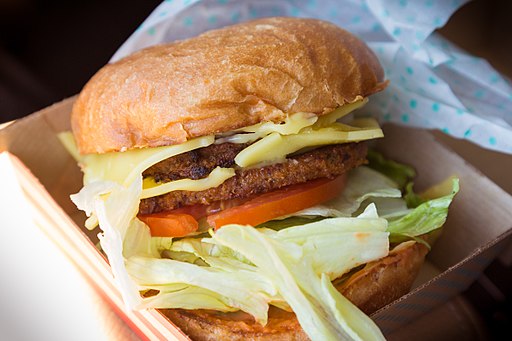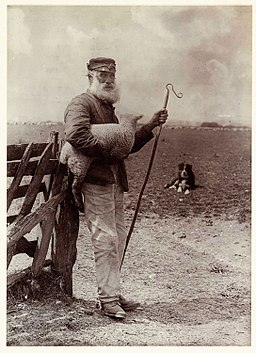Spell It Out
Arsenic, bacteriophages, benzoic acid, chlorine, copper, melengestrol acetate, potassium bisulphite, ractopamine, sodium benzoate, sodium proprionate, tilmicosin, transglutaminase, trenbolone, urea, and zeranol.
And that is by no means a comprehensive list of all the chemicals that may be found in hamburgers made from ground beef produced from factory farmed cattle and sold at grocery stores nationwide. Just about everything we eat can be made to sound pretty scary when it’s broken down like this into terms only chemists might understand.

Burgers and hotdogs cooking on a charcoal barbecue grill. Photo by Luke.
The point again of producing a meat alternative that appeals to meat eaters is to wean them away from supporting the factory farming of animals, with its disastrous consequences for the animals, the environment, and ultimately for the people producing and consuming the meat. The beef industry has a powerful lobbying influence on government, and it has the means and the ability to employ mouthpieces everywhere who can disguise their links to the industry. It’s still early in the development of competition between the beef industry – and agribusiness as a whole – and producers of meat alternatives, but perhaps the meat producers see down the road to where consumer preferences shift away from them in a big way as buying satisfying meat alternatives becomes easier and cheaper.
Oingo Boingo performing “Weird Science”, with songwriter and film music composer Danny Elfman singing lead.
It’s wise to read labels and to be skeptical of genetically engineered foods, keeping in mind not all of them are inherently as harmful as Roundup Ready crops, which introduce herbicide residue throughout the food supply. Making informed decisions requires at least a modicum of research rather than merely listening to the loudest voices in print, on the air, or on the internet. It’s also prudent to look ahead and not stay stuck in old ways of doing things when newer, better alternatives present themselves. Ask the makers of BlackBerry smartphones, and any of the other true believers in the status quo throughout history as changes swirled around them. This Memorial Day weekend, if you’re able to grill some tasty, ethically produced meat substitutes then that’s great, and since the holiday cookouts will most likely be hot and thirsty occasions, you may like to accompany your meal with a glass of cool, refreshing dihydrogen monoxide, otherwise known as water.
— Techly 





